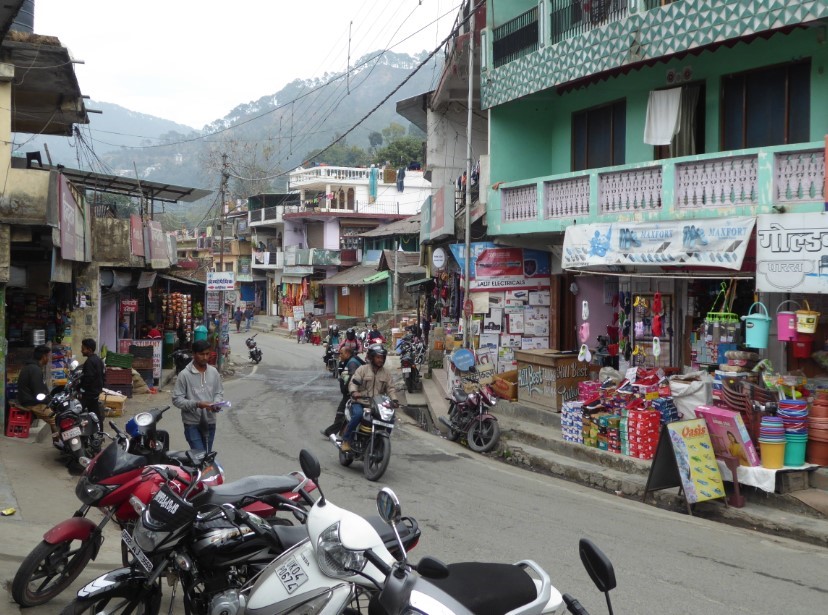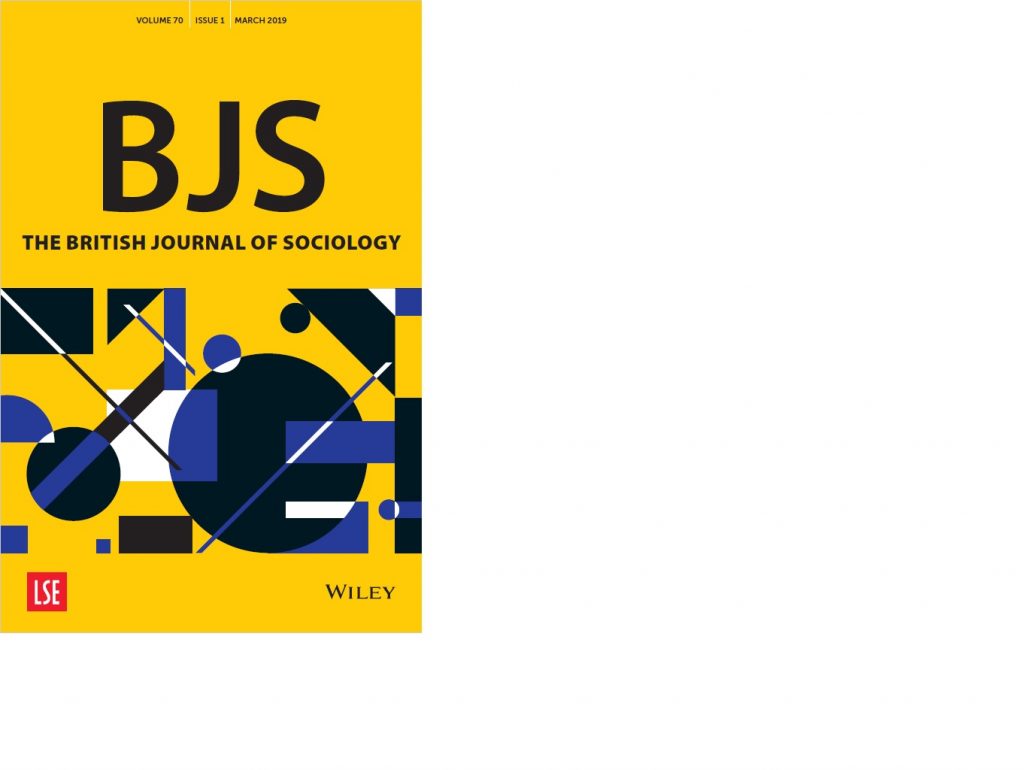Has the Pandemic Changed the Cities Forever? Everyday Urbanisms and Covid-19 from an Indian Context
by Dr Nupur Pattanaik, Central University of Odisha · Published · Updated

A street in Bhimtal, Uttarakhand. Photo credit: Dr Hilary Erenler
With regards to Covid-19, India is the second most affected country in the world. The urban dimension of Covid-19 in Indian cities reflected the urbanisms, geographies, culture and patterns of life that varied across different intensities and forms. The pandemic has brought to the fore the issue of urban vulnerability, how cities are affected by pandemics and how there is a need to develop pandemic resilience and reimagine cities in the post-pandemic world.
The Pandemics of Urban Cities
The World Economic Forum Report on Indian Cities in the post-pandemic world highlights the country’s most pressing challenges as exacerbated by the pandemic, and lessons that could pave way for an urban reform agenda envisioning a post-pandemic city with new urbanisms. Cities are hubs of business and innovation, with opportunities for employment, access to health care and education. As more people move to cities, the urban world makes the pandemics more likely. The urban nature of cities becomes clearer with the larger Indian cities – health crises soon became a socio-economic challenge in the world.
The pandemic is a major transformation in India’s Urban Journey with lots of lasting lessons. City workers faced enormous problems, with the most affected being the daily wage workers, construction workers, sanitation, domestic, and street vendors. In the distancing, isolation and thinning out of public spaces, the spectre of crowds was missing in the Covid induced lockdown city.
The most crucial part is a fear of what lies ahead, and a sense of place and space that may be permanently transformed.
As Covid spread in India, the distancing guidelines proposed by the Government restricted the social, political, and economic space, creating a change in cultural norms as well as isolation among the masses. People created their leisure in these times through various innovative habits in cooking, cleaning and new modes of spending time in lockdown, which has created a different culture among them. The most crucial part is a fear of what lies ahead, and a sense of place and space that may be permanently transformed.
A study conducted by the Centre of Urban Design and Mental Health estimates that cities are associated with increased mental health problems – 40% higher risk depression, 20% more anxiety and double the risk of schizophrenia, with loneliness, stress and other mental and social issues. The pandemic has magnified this. The countrywide lockdown and the migrant crisis led to the exodus of thousands of migrant workers from Indian cities to villages, the lockdown affected the livelihood of 4 crore internal migrants. The lockdown has brought immense misery and risks to people located in the margins of Indian society.
Women have encountered difficulties including increasing cases of domestic violence. Lockdown and mobility restrictions has resulted in Work from Home (WFH) culture that has impacted women differently. Women remained vulnerable to job loss, as unpaid work increased during the pandemic. According to the National Sample Survey Organization 2009(NSSO), women take on almost 10 times more domestic work than men. The lockdown situation has exacerbated risks of violence, exploitation, abuse or harassment, with older women at a higher risk of persistent inequalities. As per the reports by the OECD Development Centre’s Social Institutions and Gender Index (SIGI) women carry out far more care work than men. There have been persistent inequalities among women across various dimensions at the urban centers with the additional burden and increased risk to women of poverty, gender stereotypes, discrimination and violence. Prolonged lockdowns and restrictions have tripled unemployment in India from March to April, as the vast majority of the urban population work in an unorganized sector.
The urban populace has been affected intensely; slum and informal settlement vulnerabilities, with manual scavengers and sanitation workers, disabled people, those with pre-existing gender, ethnic, religious and racial inequalities, all have long term insecurity to jobs and livelihoods due to the pandemic. With this uncertain catastrophic disease, the impact on young children has also been harder, with a rise in virtual learning and a lack of safe, accessible environments and educational spaces for children. The Covid-19 pandemic has become a child rights crisis according to the reports by UNICEF (United Nations Children Education Fund). The pandemic has made a hard strike more on the urban poor than the people residing in villages, with a decline in the nutritional quality and quantity of food accessible.
Every-day Urbanisms and India
The idea of the everyday city is based on the concept of everyday urbanisms, where the city is seen as a social product, and focuses on informal urban spaces. Based on the ideas of French philosopher Henri Lefebvre and other writers, it refers to the approach of urbanism that finds its meaning in everyday life. It has also been viewed as a shadow pandemic in India where it has caused increased marginalization of already vulnerable populations, where it is not neutral to caste, class and gender.
In Indian cities life is lived, but the pandemic changed it.
Education, culture, day to day living, travelling, as well as public spaces have been highly impacted by new norms of society, with masks constituting an important element in everyday conversations. In Indian cities life is lived, but the pandemic changed it. The noisy, congested, vibrant public spaces were replaced with silence, the everyday city with the tea sellers, street vendors, mobile people and vehicles have been missing for a year. The whole urban scene has witnessed a drastic revolutionary change, with roadside eateries, cobblers, everyday spaces and their entities outdoors in an urban living space are missing. The daily rituals of navigating the local market and shopping malls started disappearing with the Covid pandemic. These ordinary public spaces foster social interactions and benefits, specifically to the poorer sections of society who live in dilapidated conditions.
According to the social theorists Antony Giddens and Ulrich Beck, risk society is where people are preoccupied with the notion of fear. There has been a sociology of fear or a social construction of fear, with fear being futuristic, characterised by upcoming threats of the pandemic hereafter dominating the lives of the urban milieu. Indoor spaces are also lacking their everyday traits as there is no sign of an outside element, with social distancing and isolation, and the fear of Covid looming large.
New Urbanisms and the Post-Pandemic World
In everyday life, children, young people and old people have been transforming their living spaces by a new urbanism in India and with new diverse, inclusive, sustainable spaces, where people want to live in now and in the future. Returning to normality with adequate urban planning and governance is the need of the times. Though cities have faced the maximum brunt and were at the front line, need for development and redesign is a prime concern for the post-Covid growth in India. Envisioning a post-pandemic smart city is what remains to be an important manifesto. A healthy, sustainable city with restructured social and economic health infrastructures is an emergent need and necessity for post pandemic settlements in order to allow people in urban townships to live safely.
While the pandemic brought looming challenges to the lives of people across different gender and ages, a city must be planned to focus more on providing opportunities to the vulnerable masses and providing space on an equitable basis for all sections of society. A more systematic responsive framework of planning needs to be prepared on a comprehensive basis with active participation of economists, sociologists, demographers, town planners, urban planners, media, and civil society to produce long term plans and bring meaningful and long-term change.
The pandemic visualized the need for a sustainable urbanization, taking into account the questions of disaster preparedness and management in urban spaces, and contributing to the quality of life of existing communities and their future development in the post-pandemic world. As there will be a myriad of challenges in times to come, urban cities need to be redesigned and reshaped to build urban resilience and reduce existing gaps, by strengthening social solidarity and prioritizing sustainability in the new world.
About the author:

Dr. Nupur Pattanaik Teaches Sociology, Department of Sociology, Central University of Odisha, Koraput. She specializes on issues of subaltern studies, mobility studies labour and work.
She has published her writings in popular news media:
Contexts, Women’s Web, Feminism in India, Youth Ki Awaaz, Social Science Space, Down to Earth, The Sociological Review, The Wire
Email: nupur.pattanaik@gmail.com
She can be found in Instagram and Twitter
Instagram: https://www.instagram.com/nupur.pattanaik
Twitter: https://twitter.com/NupurPattanaik





